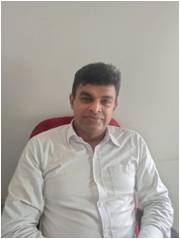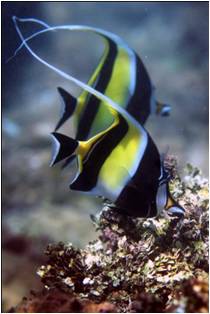Episode 31 – Hikkaduwa Marine National Park

How Hikkaduwa Sanctuary became a National Park
Hikkaduwa area is declared originally as a sanctuary. Then it was declared as a nature reserve and followed as a National Park. Hikkaduwa National Park was established as a full Marine National Park in 2002.
Before 1998, Hikkaduwa had more than 180 coral species belonging to 60 Genus. Corals were destroyed due to the warm water wave called “El Nino” that came in 1998. The density of some species decreased.
Although the ownership was transferred to the Department of wildlife technically, there was no building belonging to the Department. The office was maintained in a rented building. At the end of 2006, the Hikkaduwa Cooperative provided land to the Department. A small office was built there, but it was not enough for the scientific management.
At the end of 2008, I got a transfer from Yala National Park to Hikkaduwa National Park as the site manager.
During this period, nearly twelve fishing boats were anchored in a very irregular manner. The fish brought from the boats were also taken out from within the National Park. Swimming, snorkeling, and watching corals became dangerous for tourists.
We first prepared a formal plan. The Wildlife Department, the Coast Guard Department and the Police jointly developed a tourism management plan. This work also received support from local committees. At that time, the Director General of the Department of Wildlife was Mr. H.D Ratnayake.
According to this plan, we first registered the glass bottom boats used for coral watching. Initially 53 boats were registered. Also, fishing boats were removed from the national park. A zone has been set up for snorkeling and a zone for tourists to swim. At the same time, the route for boats was set upoutside these zones. This ensured the safety of tourists as well.
A separate area was made to park the boats. There were protests against this. Boat owners pulled several boats on the road and staged a protest on the Galle-Colombo road.We took legal action in that regard.
We had bought a plot of land to build our office. For a long time, boats have been pulled ashore in this area during the stormy season of the sea. In 2010, we planned to build our new office on this land.
Two teams of Officers from Girithale training came to lay the foundation of the building. Also, officials came from Hikkaduwa Wildlife Office, Head Office and Kalamatia Wildlife Office. People staged a mass protest there that day. They did not allowus to construct the building. We stopped work at that time and retreated.
After that, he took the support of the ministry and went to the district committee to get the support. Started working again after a month. The monks who joined the campaign came and blessed us by chanting pirith.
By now, the construction of the wildlife office has been completed and all official work is being done from there. We had not been able to issue even a wildlife license. Along with this process, licenses were issued from there.
There was also a protest on the day the license was issued. We got support from the police and the committees of the HikkaduwaUrban Council. With our licenses we were able to collect the ten percent entertainment tax that should be charged on boats.
During this time, from 2009-2014 I stayed in Hikkaduwa National Park. A series of unforgettable incidents stuck in my memory.
In the year 2023 again, I got a transfer to Hikkaduwa. Started collecting data on corals this year. It can be completed in July next year.
I hope to do many activities for the improvement of Hikkaduwa National Park.
Mr. Asanka Gunawardane

Mr. Asanka Gunawardena joined the Department of Wildlife Conservation in 1998 as an 11th Grade Wildlife Ranger Officer after being selected through a competitive examination.
He has completed 25 years of service in Lunugamwehera, Head Office, Udawalawa, Maduru Oya, Yala and Hikkaduwa National Parks.
Mr. Asanka Gunawardena, who was studying for a diploma in agriculture when he joined the service, has also studied the diploma course in wildlife management at the University of Colombo offered by the Department of Wildlife Conservation.
Mr. Asanka Gunawardena studied at St. Aloysius College, Galle from Kindergarten to Advanced Level.
He married Miss Sandamali Batuanthuduwa in 2004 and is currently the father of a daughter and a son. Wife Sandamali engaged in the beauty culture industry. The daughter is studying Advanced Level at Southlands College, Galle and the son is studying for the GCE Ordinary Level at St. Aloysius College.
His address is 551, Batugoda, Bussa.
Hikkaduwa Marine National Park

This area in Hikkaduwa, which was declared as a Sanctuary on 18th May 1979 and as a Nature Reserve on 14th August 1988, with the main objective of conserving coral reefs, was gazetted by the Gazette No. 1257/ 14 on 05th October 2002 under the Fauna and Flora Protection Ordinance as the Hikkaduwa Marine National Park.The Hikkaduwa Marine National Park is located in the Hikkaduwa Divisional Secretariat in the Galle District of the Southern Province. According to the Department of Wildlife Conservation, this 101.58 hectare park is one of the three National Marine Parks in Sri Lanka where you can see an ecosystem of marine life. The other two parks are Adam’s Bridge Marine National Park and Pigeon Island National Park.

The beaches belonging to Hikkaduwa National Park stretch for 4 km and are narrow. Coral reefs here play an important role as a breeding ground for marine life. Coral reefs are also known as natural breakwaters as they act against natural coastal erosion.
This land belonging to the wet zone receives rain from the south-west monsoon and the north-east monsoon and the temperature is around 28o C. The average annual rainfall is 1,500 to 5,000 mm, fed by the southwest monsoon from mid-April to mid-June; it is fed by the northeast monsoon from mid-September to November. During the period of monsoon rains, the waves of the sea show a tendency to accelerate. The period from January to March has dry weather, and this period is an ideal time to visit the park. The temperature of the water here is up to 28o C-30oC.
The park is populated by sea grasses. Green macro algae (Halimeda Sps.), Sea water algae (Caulerpa Sps.), Sea lettuce -Edible green algae (Ulva Sps.) and Small brown algae (Padina Sps.) are the algae species found there. Green salt water algae; Sea water algae and Green macro algae are spread throughout the sea depth of 5 to 10 meters. Sea grass is a food source for many marine organisms. Sea grass traps silt and prevents erosion of the seabed. It also provides habitats for the endangered dugong and the protected sea turtle.
Corals that form coral reefs are often found in shallow water. In this National Park, which has been declared with the purpose of coral reef conservation, coral reefs are classified as fringing reefs, barrier reefs and atolls according to the nature of the corals.60 species of corals belonging to 31 genera have been recorded;Stag Horn Coral (Acropora Sps), Elk Horn Coral (Acropora Sps.), Cabbage Coral (Montipora Sps.), Brain Coral (Mussidae and merulinidae Sps.), Table Coral Table Coral (Acropora Sps.), Star Coral (Montastraea Sps.) etc. A coral reef can be recognized as one of the most productive ecosystems in the world which provides habitats and food for many marine organisms including fish, i.e., an ecosystem that sustains life in the ocean. The appearance and size of corals are also influenced by external characteristics such as water temperature, amount of light received, and availability of food.









Coral species
In Hikkaduwa National Park, 113 species of reef associated fish species belonging to 48 genera and 8 species of colorful fish have been recorded.




Fish associated with coral reefs
Many invertebrates such as crabs, turtles, shrimps, lobsters, oysters and sea worms are also found. Three species of turtles are also foundin Hikkaduwa Marine National Park.

In particular, Hikkaduwa Coral Reef can also be called a breeding ground for marine life.Here, tourists have the opportunity to observe coral reefs from glass-bottomed boats as well as engage in water recreational activities such as snorkelling, scuba diving and swimming.




Sandy beach
Hikkaduwa Marine National Park can be reached by coming on the Colombo Galle Expressway. And also coming by to Galle from Colombo Galle expressway and again going back towards Colombo on the old Galle road.
The shallow beautiful coral reefs on the southern coast of Sri Lanka attract local and foreign tourists, but natural hazards and human activities are seriously affecting the destruction of coral reefs. The tendency of many fishermen to use dynamite to catch fish is a reason for the destruction of fish populations and coral reefs. Illegal fishing practices thus destroy the spectacular coral reefs.Previously, glass-bottomed boats, which are used by local and foreign tourists to visit coral reefs, often run in the marine environment releasing water and oil, caused various threats to the corals and associated animals living there. Due to the breaking of coral reefs for a large period of time for local lime industry, the coral reefs have been severely damaged and many species of coral species have become extinct. In 1998, the El Nino event with warm sea currents destroyed many coral reefs. Coral reefs act as a strong barrier in situations like tsunamis.
It is a responsibility of all of us to protect the Hikkaduwa Marine National Park by understanding its environmental and aesthetic importance.
Excerpt-
National Parks of Sri Lanka -(by P.M. Senaratne)
the internet.
List of animals in the Hikkaduwa Marine National Park
Sinhala Names | Tamil Names | English Names | Scientific Name |
කකුළුවා | நண்டு | crab | Brachyura sps. |
කැස්බෑවා | கடலாமை | turtle | Testudine sps. |
| ඉස්සා | இறால் | Prawns | Dendrobranchiata sps. |
පොකිරිස්සා | பாறை இறால் | lobster | Nephropidae sps. |
බෙල්ලා | சிப்பி | oyster | Ostreidae sps. |
මුහුදු පණුවා | கடல் புழு | sea worm | Belong to six phyla |
මුව අං කොරල් | மான் கொம்பு பவளப் பாறை | Stag Horn Coral | Acropora Sps |
ගෝන අං කොරල් | மரை கொம்புப் பாறை | Elk Horn Coral | Acropora Sps. |
ගෝවා හැඩැති කොරල් | கோவா வடிவமுள்ள பாறை | Cabbage Coral | Montipora Sps. |
මොළ හැඩැති කොරල් | மூளை வடிவமான பவளப் பாறை | Brain Coral | Mussidae and merulinidae Sps. |
මේස ආකාර කොරල් | மேசை வடிவான பவளப் பாறை | Table Coral | Acropora Sps. |
තාරකා ආකාර කොරල් | நட்சத்திர வடிவான பவளப் பாறை | Star Coral | Montastraea Sps. |
List of trees in the Hikkaduwa Marine National Park
Sinhala Name | Tamil Name | English Name | Scientific Name |
| Green macro algae | Halimeda Sps. | ||
Sea water algae | Caulerpa Sps. | ||
Sea lettuce-Edible green algae | Ulva Sps. | ||
| Small brown algae | Padina Sps. |
Editor– Dammika Malsinghe, Additional Secretary,Ministry of Wildlife and Forest Resources Conservation (MWFRC)
Article on park written by– Hasini Sarathchandra, Chief Media Officer, Department of Wildlife Coservation (DWLC) Mahesha Chathurani Perera ,Development Officer, (DWLC)
Tamil Translations– A.R.F. Rifna, Development Officer, MWFRC
English Translations – Asoka Palihawadana, Translator, MWFRC
Web Designing–N.I.Gayathri, Development Officer,MWFRC -C.A.D.D.A. Kollure, Management Service Officer, MWFRC
Photography– Ranga Wijerathna, DWLC